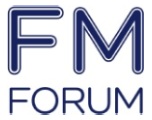In the latest instalment of our FM industry executive interview series we speak to Hereworks Solve‘s Rares Miron (pictured) about managing demand for the preferred workplace, the opportunities presented by data-driven processes and the ongoing need to place people at the centre of workplace strategy…
Tell us about your company, products and services.
We ask people if they know what’s p*ssing their building occupants off as, ever more, it’s the softer elements within the workplace that are not being treated, nor heard. Hereworks Solve came out as a direct response to Facilities Managers feeling undervalued, unreported issues and building occupant frustration – and is now revolutionising workplace management by making it incredibly simple for absolutely anyone to report issues and request support. Our platform Solve enables users to submit requests in under 3 seconds – no app download, just tap.
Each request is instantly logged and immediately and intelligently routed to exactly the right person or team. Facilities managers see issues and can then visualise all requests on a heatmap, making it easy to support occupants, identify patterns, and prioritise tasks effectively. No more ‘can you just…?’, no more post-it notes, no more calls, no more WhatsApps, no more unreported issues. Literally anyone can report anything, anywhere and any time.
Having spent years as a Director of Facilities Management at a large organisation, I’ve been on the other side – managing teams, juggling competing priorities, and wrestling with clunky systems that promised more than they delivered. That experience shapes everything we do at Hereworks Solve. We’re building solutions that I wish I’d had when I was in an FM leadership role, tools that actually solve real problems rather than creating new ones.
What have been the biggest challenges the Facilities Management industry has faced over the past 12 months?
The focus moved from dealing with the continuing struggle with occupancy unpredictability to managing demand for the preferred workplace work setting in the office. The thing is, you may not get your ideal physical work setting on the day in the office but, with the right tools and operations strategy in place, you should get all the help to make it suit your needs. That’s where the focus is now.
But the growing expectations around workplace experience and meeting these expectations with traditional FM tools and processes is increasingly difficult. Also adding a shiny new app doesn’t seem to be the silver bullet, as adoption rates have generally been low. A different approach is needed.
And what have been the biggest opportunities?
The shift toward data-driven facilities management; there’s an unprecedented opportunity to capture real-time feedback directly from occupants and use that data to make smarter decisions about space utilisation, resource allocation, and preventive maintenance. All of which means that the human is now truly the centre of our attention.
Technology adoption has accelerated significantly; stakeholders who were previously resistant to digital solutions are now actively seeking them out. This opens doors for innovative platforms that genuinely solve problems rather than just digitising old processes, processes which often don’t work with users in mind.
There’s also growing recognition that workplace experience directly impacts talent retention and productivity, which means FM – finally – has a seat at the strategic table.
What is the biggest priority for the FM industry in 2026?
Putting people back at the centre of workplace strategy. For too long, FM has been driven by assets, systems, and operational metrics. The biggest priority now is shifting that focus back to the human experience, understanding how people actually feel in the workplace, what barriers they face daily, and what would genuinely improve their environment. Essentially, we’re turning humans into sensors, and if the coffee machine’s working, those sensors are super charged 😊
What technology is going to have the biggest impact on the market this year?
Everyone’s talking about AI but let’s take a step back to look at the big picture; I genuinely believe that anything putting the building users at the front and centre is going to be the tech of choice and that makes a real, tangible difference.
In 2026 we’ll all be talking about…?
A fundamental shift toward worker experience and the human factor. We’ll move beyond just measuring response times and SLAs to truly understanding how people experience the workplace day-to-day. Organisations will recognise that a well-functioning building isn’t just about operational efficiency, it’s about how comfortable, supported, and productive people feel in the workplace.
Greater emphasis on preventive maintenance. Instead of waiting for things to break, smart buildings will identify issues before they become problems.
Integration between workplace management systems will become standard rather than exceptional. Siloed platforms that don’t talk to each other will increasingly be seen as unacceptable.
Which person in, or associated with, the Facilities Management industry would you most like to meet?
The industry events such as conferences and summits bring together people with a wealth of experience and many stories to tell. Having the opportunity to participate and network at such events is a highlight for me.
What’s the most surprising thing you’ve learnt about the Facilities Management sector?
We (as in the FM sector) designed platforms assuming somehow that any end user interacting with it has the skillset of a Facilities Assistant. I’m sure that wasn’t necessary the intent but that’s what we ended up with. And that’s the problem.
How many workplace issues simply never get reported because of this?
Before working in this space, I assumed that if something was broken or uncomfortable, people would naturally report it. The reality is that 70-80% of issues go unreported because the reporting process requires too much effort (too many steps), or people don’t think anything will change.
When you remove friction from reporting, you discover that occupants have incredibly valuable insights about how buildings actually function that traditional monitoring systems completely miss.
Too often, buildings are being served by the occupants; we need to move to a place where the occupants are instead served by the buildings.
You go to the bar at the Facilities Management Summit – what’s your tipple of choice?
A craft beer – something local and interesting. I appreciate solutions that are thoughtfully made and don’t follow the mass-market formula.
What’s the most exciting thing about your job?
Seeing the immediate impact on people’s daily experiences. When someone reports an issue in 3 seconds and sees it resolved quickly, that’s tangible value. We’re not just moving data around, we’re genuinely making workplaces better places – helping and frictionless – meaning more productive workplaces.
And what’s the most challenging?
Changing engrained behaviours and expectations. Many organisations have been managing facilities the same way for decades. Convincing stakeholders that there’s a better way and that occupants will actually use a new system requires patience and time.
What’s the best piece of advice you’ve ever been given?
Sleep on it! — great for gaining clarity before making important choices.
Peaky Blinders or The Mandalorian?
This is the way! 😉




